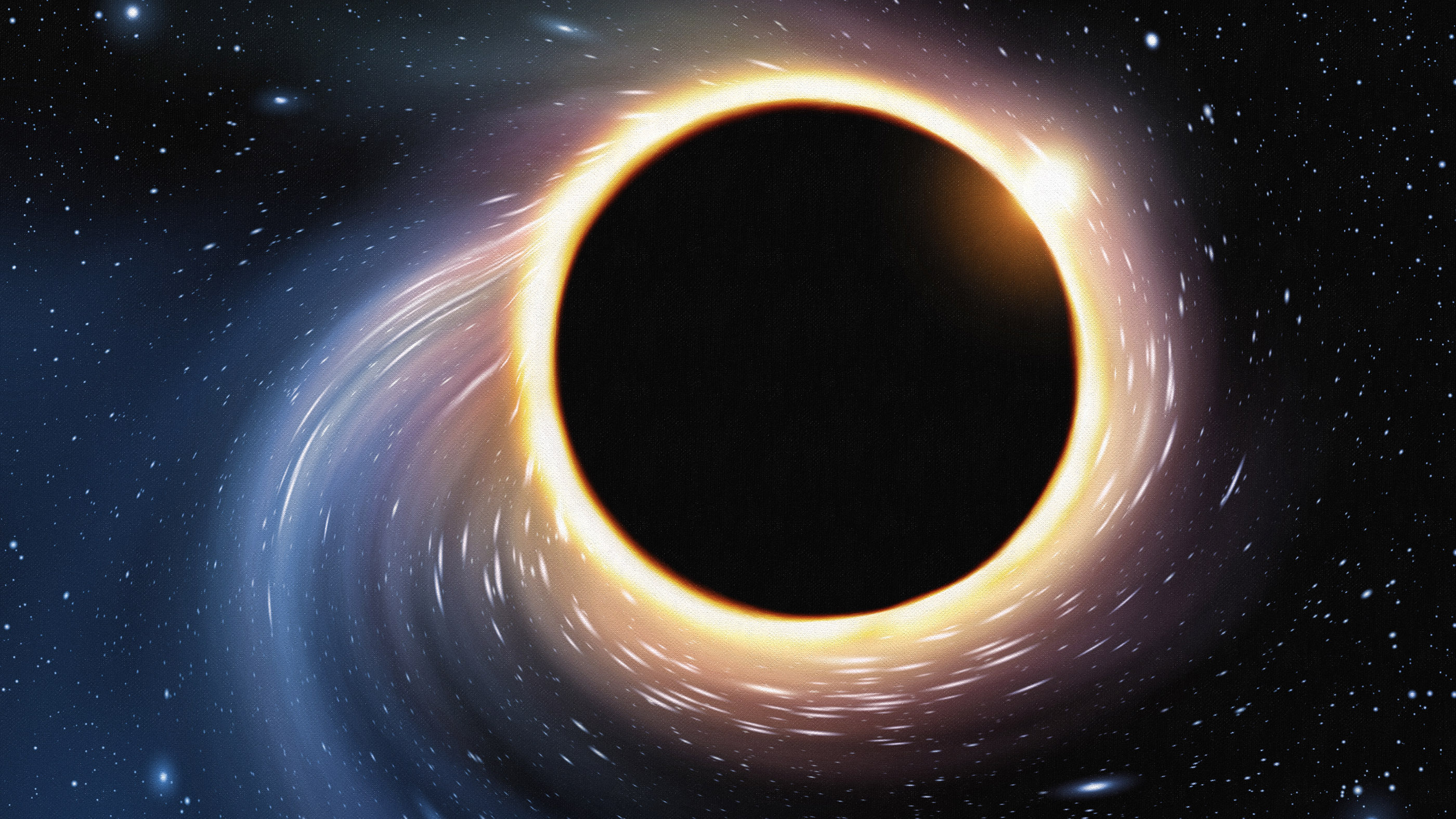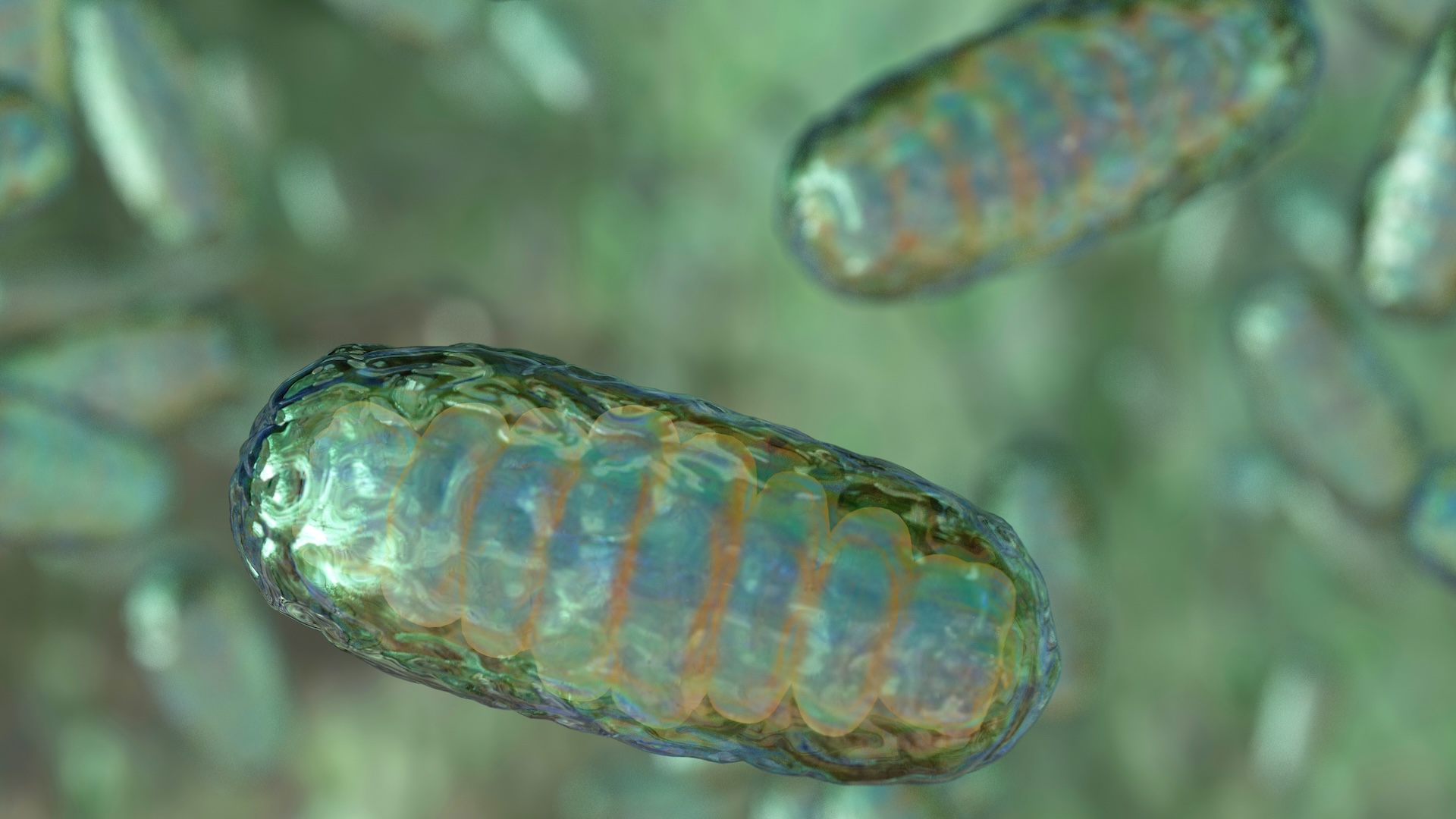
Black holes so big we don't know how they form could be hiding in the universe

Black holes can get big … really big. But just how big? It's possible they could top out at over a trillion times more massive than the sun. That's 10 times bigger than the largest known black hole so far.
But could these monsters truly exist in our universe? A team of researchers has come up with a plan to go hunting for them. And if they exist, they could help us solve the mysteries of how the first stars appeared in the cosmos.
Related: The biggest black hole findings
The demographics of the dark
If you want to go shopping for black holes in the universe, unfortunately you only have two basic sizes: kind of small and gigantic. You know that frustrating feeling you get when the online store is out of your size of that amazing shirt? Welcome to the life of the black hole hunter.
Small black holes, or stellar-mass black holes, are more massive than our sun, but not by that much. Because black holes are born from the deaths of massive stars in the final stages of a titanic supernova explosion, and massive stars have to be so big in order to go full supernova, the smallest black holes are around five times more massive than our sun.
Through mergers with other black holes and by slowly feeding on any stray bits of gas that wander too close to their ever-hungry mouths, these black holes can get bigger. We've seen evidence for black holes all the way up to nearly100 times the mass of the sun.
Stellar mass black holes are incredibly common in the universe — there are probably millions of them floating around the Milky Way galaxy right now. Pretty harmless, unless you get too close. The same is true for any other random galaxy in the universe: lots and lots of little black holes, left over from all those big, beautiful stars.
Related: 11 fascinating facts about our Milky Way galaxy
But the centers of galaxies host something even crazier: supermassive black holes. We have a supermassive black hole in the center of the Milky Way, and we call it Sagittarius A*. It has a mass about 4 million times that of the sun. Like I said, super massive. These beasts are easily a thousand times more massive than their stellar-mass cousins.
It seems that just about every galaxy hosts a giant black hole in its heart, with the absolute largest black holes on record tipping the scales at nearly 100 billion solar masses.
Astronomers have long been hunting for outliers: black holes smaller than five solar masses or in between stellar and supermassive black hole size. But a new paper, published Aug. 18 to the preprint database arXiv (so not yet peer-reviewed), poses a completely different kind of question: What if we took the biggest black holes and turned them up to 11?
Get the world’s most fascinating discoveries delivered straight to your inbox.
How to make something stupendously big
This entirely new class of black holes, would dwarf the supermassives. These "stupendously large black holes" would start at a trillion solar masses (10 times bigger than the current largest known black hole) and could possibly be even bigger.
Understandably, these monsters among monsters would be rare. It's hard for our universe to make large things, because you need to glue a bunch of material together and get it to settle down and stay put, which matter doesn't really like to do.
Still, it's theoretically possible for these beasts to exist. And if we find them, it would help explain how many types of black holes form.
Related: The 12 strangest objects in the universe
The first black hole's appeared when the universe was very young, less than a billion years old. Over the eons, they merged and fed and grew to become supermassive black holes, and possibly the stupendously large black holes. But there's a limit to how quickly they can grow. To grow by mergers, they actually have to encounter and swallow other black holes. So if there aren't a lot of other black holes around, mergers aren't going to happen very frequently, and that won't be a viable avenue to greatness.
On the other hand, black holes can also grow by feeding on material. But as material falls toward the event horizon (considered the point of no return) of a black hole, it compresses and heats up. That releases radiation, which pours out of the central regions near a black hole and prevents new gas from falling into the black hole. The complex physics of falling into a black hole then sets an upper limit to how quickly black holes can feed.
The largest known black holes are a challenge to current astrophysical knowledge. It's hard to concoct the scenario of enough mergers and enough gas feeding to grow a tiny baby black hole in the early universe into the monsters lurking in galactic cores.
To find a stupendously large black hole would force us to consider new avenues for how black holes are born. Perhaps the first, and largest, black holes didn't come from the deaths of massive stars. Maybe they formed directly from the collapse of gas clouds, or from exotic processes in the early universe. Or something even stranger.
That's why the discovery of a stupendously large black hole would be so exciting: Theorists would rub their hands with glee, ready to devise an explanation for them.
Searching for monsters in the night
But how do you actually find a super-duper giant black hole? The new research paper gives some insights of how to go hunting.
For one, because of their stupendous bulk, the stupendously large black holes (SLABs) can actually affect the gravitational evolution of their home galaxies. Even supermassive black holes, as big as they are, are typically less than 1% of the mass of their host galaxies. But because SLABs are bigger, they can start to exert a gravitational influence.
For example, with that much gravity crunched up in the core, galaxy shapes could be distorted, or that gravity could change the way galaxy mergers happen. So SLABs could explain any funking-looking things in pictures of galaxies.
And if SLABs have origins in the exotic physics of the extremely early universe, then as they populate the cosmos and continue to grow to stupendously large sizes, they'll leave an imprint in their surroundings. For example, they can attract so much matter that they affect the cosmic microwave background, the leftover light from when our universe first became transparent when it was only 380,000 years old.
Related: From Big Bang to present: Snapshots of our universe through time
SLABs might accumulate so much matter, and be so good at gobbling up anything in their vicinity, that even the mysterious dark matter might collect around them in a sort of halo. If dark matter (whatever that is) interacts with itself, it might emit a very particular kind of radiation. So these super gigantic black holes might be surrounded by a halo of high-energy light generated by dark matter. So far, we don't know if SLABs exist, and all of the above methods have only placed constraints on how big they could possibly be. Depending on your choice of model of how SLABs came to be, our current best guess is that the biggest possible black hole is around 10^19 solar masses, or 10 billion billion times more massive than the sun. Anything bigger than that would violate what we've already measured in the cosmos. But that still leaves a wide-open gap of potential SLABiness in our universe.
Originally published on Live Science.

Paul M. Sutter is a research professor in astrophysics at SUNY Stony Brook University and the Flatiron Institute in New York City. He regularly appears on TV and podcasts, including "Ask a Spaceman." He is the author of two books, "Your Place in the Universe" and "How to Die in Space," and is a regular contributor to Space.com, Live Science, and more. Paul received his PhD in Physics from the University of Illinois at Urbana-Champaign in 2011, and spent three years at the Paris Institute of Astrophysics, followed by a research fellowship in Trieste, Italy.
